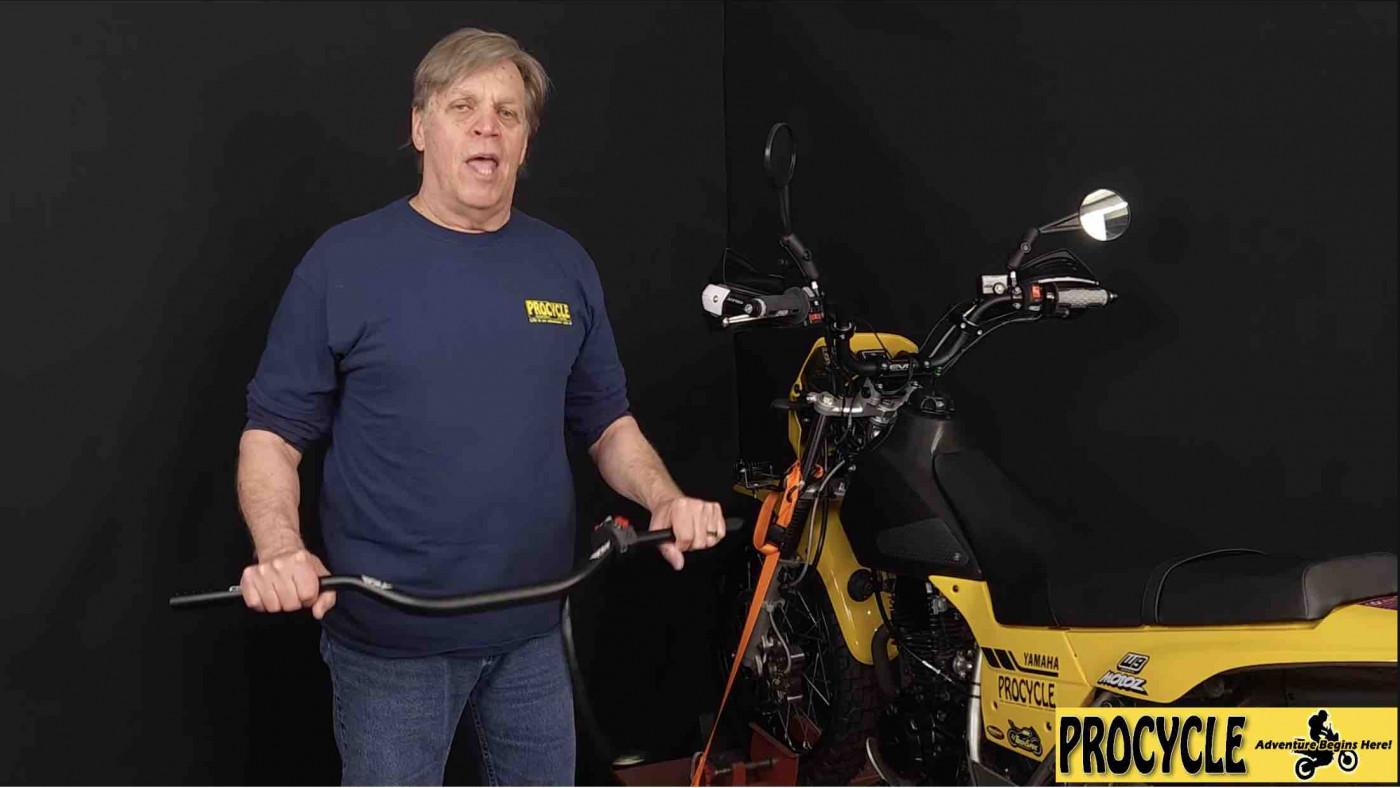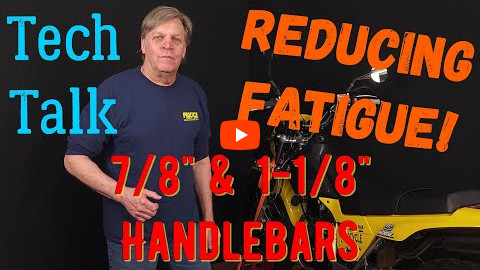Your bike's handlebar is a key element for your safety and comfort while riding. OEMs generally include a simple, basic stock handlebar, but we can easily improve it to increase the level of control and reduce the amount of fatigue while on your dual-sport.
Most manufacturers use a soft steel tube that's 7/8" in diameter. Steel has a tendency to transfer vibrations from the road and engine to your hands and arms, causing fatigue. This is why bar-end weights are often used to dampen the vibrations. Many of our riders also find OE handlebars to be bent at an uncomfortable angle, causing wrist and arm strain.
A simple aftermarket upgrade you can make is to an aluminum handlebar. Most come in 1-1/8" diameter without a crossbar (not needed because of the beefier tube), while some come in the standard 7/8" diameter with a crossbar. Because aluminum has more flexibility than steel, these handlebars are better at absorbing vibrations, reducing fatigue and making your rides more enjoyable.
While the 7/8" bars mount directly to your motorcycle, the 1-1/8" bars do require adapter mounts, which we generally include in our ProCycle kits. The 1-1/8" bars taper down to 7/8" at the ends where the levers and switch gear mount, so with either size of bar, you can re-mount all of your controls without any modifications or issues.
When you mount your new handlebar, be sure that the sections where you install your grips are parallel to the ground. The levers should placed such that when you are sitting, there is a straight line from your elbows, through your wrist bones, through the center of your handlebar, to the levers. All this will ensure a more natural position for your arms while riding and reducing fatigue.

